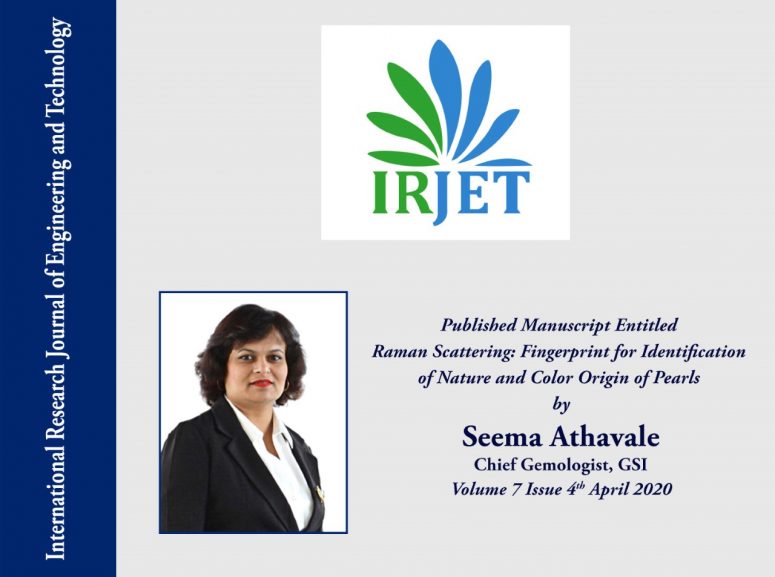
RAMAN Scattering: Fingerprint For Identification of Nature and Color Origin of Pearls – Study by Seema Athavale- Chief Gemologist, GSI
Seema Athavale, Chief Gemologist, serving in Research & Development capacity with GSI contributed to an article in International Research Journal of Engineering and Technology on RAMAN Scattering: Fingerprint for Identification of nature and color origin of pearls
Considering Pearl to be the only gem that is created by nature without human assistance to enhance its beauty, Athavale explains the color of the pearl is determined by host mollusc. Laser Raman spectroscopy helps in the identification of the primary matrix, as the external features are the same in all types of pearls.
Raman spectroscopy is also used to determine pearl’s nature of origin, as to natural, cultured, dyed pearls, irradiated pearls, and imitation pearls. Raman scattering is used to detect natural pigments on pearls and in some cases to detect color treatments. All the pearls present the characteristic peaks of aragonite at 702 cm-1 (normally a doublet at 701 and 705 cm-1 depending on the resolution used) and 1085 cm-1. Natural Colored FWCPs peak at around 1132 cm-1 and 1530 cm-1 which are characteristic of polyenic pigments. Color characteristics also differ according to the mother oyster species. The phenomenon of iridescence that shows glittering of various colors in a pearl is due to the interference and diffraction of light interacting with the specific structure on the pearl’s surface.
To read more on pearl research published in IRJET click the link here:
https://irjet.net/archives/V7/i4/IRJET-V7I4395.pdf
Debbie Azar is an experienced executive with extensive knowledge of the jewelry and gem lab industries. Her entrepreneurial skills and clarity of vision have helped GSI achieve rapid and continuous growth worldwide.
She began her industry career by starting her own successful costume jewelry business. She then expanded her knowledge of the industry with sales, marketing and business development roles at several companies. In 2005, she joined Mark Gershburg to establish GSI. Ms. Azar is an active member of myriad industry organizations and charities; she currently serves as a Board Member of Jewelers for Children. She is also a Forbes Business Council member.
Her strengths include working directly with retail chains and stores to help build their business and brands. She is widely known in the industry for her commitment to meeting customer needs.

